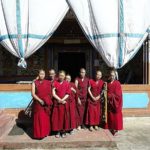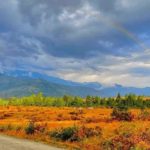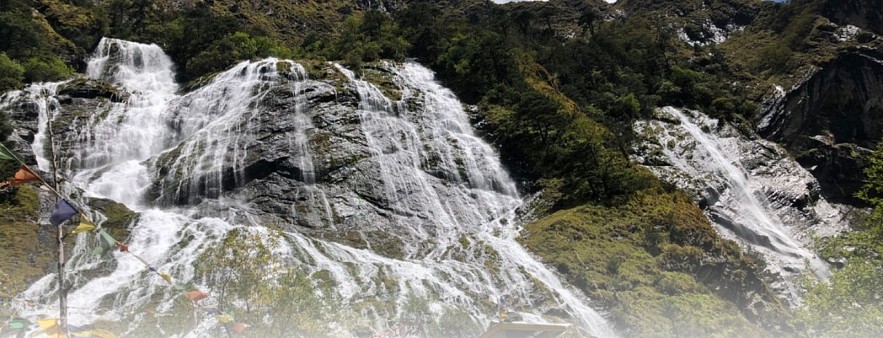 |
Chumi Gyatse: The ‘Shangrila Calling’ is born out of a desire of the Monpas to bring out the essence of the various facets of Tibetan Buddhism and its relevance to places like the Chumi Gyatse, which is one of the many Buddhist heritage sites that dots the mountainous terrains of Arunachal Pradesh on India’s eastern frontier.
The Monpas, who mostly live in Arunachal Pradesh in the Tawang and West Kameng districts, and also some to the north in Tibet, in a contiguous belt in the upper Himalayas, believe that folklore and beliefs connected to Buddhist heritage sites like the Chumi Gyatse need to be told to the outside world, and in doing that, the ‘Shangrila Calling’ would make a huge difference. In particular, the Monpas are hopeful that their brethren who live on the “China side” of the Holy Waterfalls can be part of such events wherein they would be able to experience the joy and spiritual essence of the place as well.
As of now, Tibetans who live close to Chumi Gyatse on the Chinese side are believed to be deprived of offering prayers and preserving their culture and religious beliefs in their purest form in contrast to the Monpas living on the Indian side of the border.
The international border that cuts across the Chumi Gyatse provides a contrasting picture and this came to the fore during a recent visit to the waterfalls. The Indian side is almost picture perfect with gigantic waterfalls cascading down lush green mountains, thriving with life and fun-filled intermingling of people, with many drinking the holy water to cure them of diseases and bring them good fortune (a traditional belief), whereas others were busy enjoying the freshness of the air as if there was no tomorrow, and posed for as many photographs as they could near a Gompa with a picture of the Dalai Lama on it.
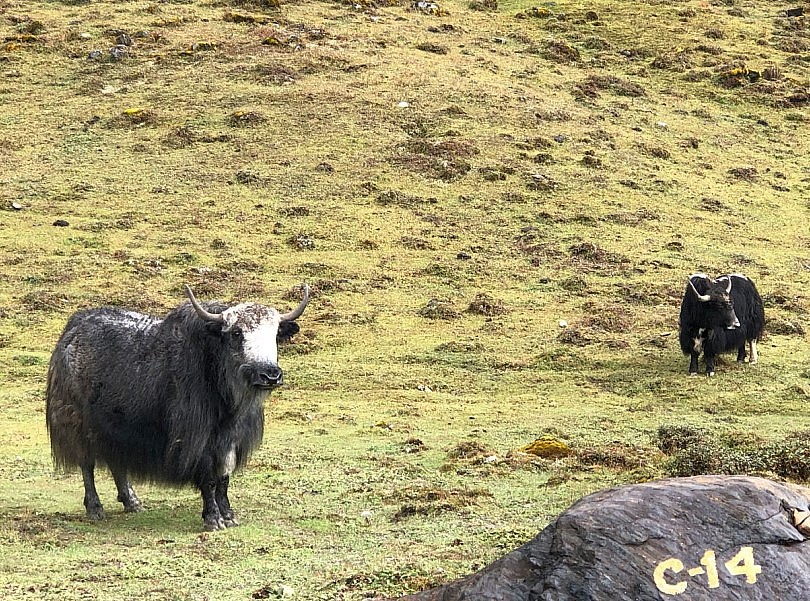 |
| Wild Yaks grazing near Tawang-Bumla road |
The Story of the Chumi Gyatse
The Chumi Gyatse (which is) a collection of 108 waterfalls dropping from an elevation of (about) approximately 11,500 feet, is said to derive its name from water or “Chu,” Mi meaning “holes,” and “Gyatse” meaning the 108 beads of a rosary or the Buddhist mala. Popularly known as the “Holy Waterfalls”, the Chumi Gyatse lies at an approximate distance of 250 kilometres from the India-China border in the Yangtse area which is one of the disputed regions along the McMohan line that divides India and the (Tibetan) Autonomous Region of Tibet in China.
The waterfalls, tucked away in the remoteness of Tsechu and have been relatively unknown all this while, came to prominence when Arunachal Pradesh Chief Minister, Khandu whose Legislative Assembly Constituency – Mugto, encompasses the area, helped initiate the building of a Gompa in 2019 (Buddhist prayer hall) for the local inhabitants in 2019. Along with the prayer hall, a newly built statue of Guru Padmasambhava who is believed to have created the Chumi Gyatse was also dedicated by the Chief Minister.
Of the many folklores associated with the formation of the waterfalls, the one that seems to have caught the imagination of the people is connected to the revered legendary Indian Buddhist mystic who is also the Guru Rinpoche. The story goes that Padmasambhava who is revered by the followers of Tibetan Buddhists as the “Second Buddha” flung his rosary containing 108 beads which hit the rocks resulting in the 108 waterfalls. He is said to have done this in response to a challenge from a Bon Lama (monk). Another story has it that he created the falls after frantic prayers from local residents to cure them of a plague that had spread throughout the area. On drinking the water, the locals are said to have been cured from the disease, which is incidentally what a tourism department plaque outside the entrance to this place mentions.
But there are a few other narratives associated with the waterfalls and its creation. According to Karsang Lama, a senior monk at the Chumi Gyatse Gompa, “the Karchek,” a 600 page Tibetan book that documents stories of Gompas and temples in Tibet talks about a Guru named Lawapa, considered to be an avatar of the Manjushree (the embodiment of all of Buddha’s wisdom), as the creator of the waterfalls.
“There were three gurus, Lawapa, Nakpopa and Matipa, who came from Tibet to this area for meditation. They lived in three different caves on either side of the mountains. Two extraordinary events are said to have happened. One of the gurus ran out of pens while continuously writing in between his meditation. On learning about this, Nakpopa threw his pen towards his friend which landed upside down near the cave giving rise to and upside down bamboo grove,” said Karsang Lama, while reiterating that “it was the power of guru Lawapa which created the 108 waterfalls.”
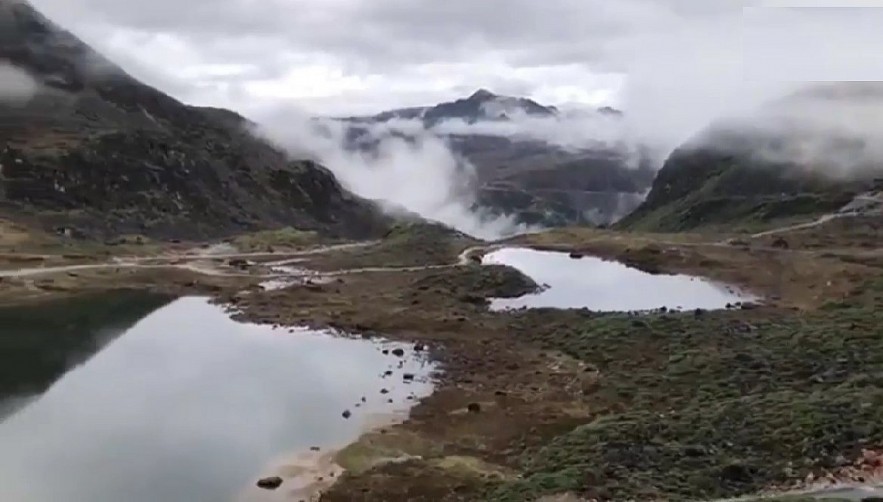 |
The waterfalls were apparently created by the guru to overcome scarcity which one of the gurus was facing while meditating in his cave. “On hearing about the problem guru Lawapa used his power by chanting some mantra and pointed towards the rocks and produced water from 108 different holes. This is the true story and written in the book, the Kharchek, from where we have found all these details”, said Karsang Lama, while acknowledging that the “throwing of the Buddhist mala (rosary) is also what is believed by many people.”
According to the Lama, Guru Padmasambhava came to Yangtse and worshipped at the Chumi Gyatse. “He cleaned up the place and has been largely instrumental for its popularity.”
While all the 108 waterfalls cannot be seen at once from the foothills of the Chumi Gyatse, local monks and villagers say that in the past “people climbed different mountain tops from where they could see all the 108 falls.” Furthermore, the water that oozes out, unlike any other waterfalls, is not snow water. “It comes from inside the mountains. This water does not dry and flows constantly,” says Karsang Lama.
The Healing Power of the Chumi Gyatse water
The water from this waterfall is considered as ‘Amrit’ (nectar) by the Monpas who use the water to cure themselves and their family members from any sickness. “You have to drink it from your heart to get healed,” says Karsang Lama, while pointing to “many kinds of beliefs.”
A popular story associated with the waterfalls is that after dirking the water, married couples have been blessed with children. “I heard this story, but it’s not written in the book,” the Lama says with a smile on his face, adding, “if you pray from your heart and ask for children, that may happen. I heard that the army Commanding Officer posted here took the water for his wife following suggestions by locals and after drinking it his wife delivered a child.”
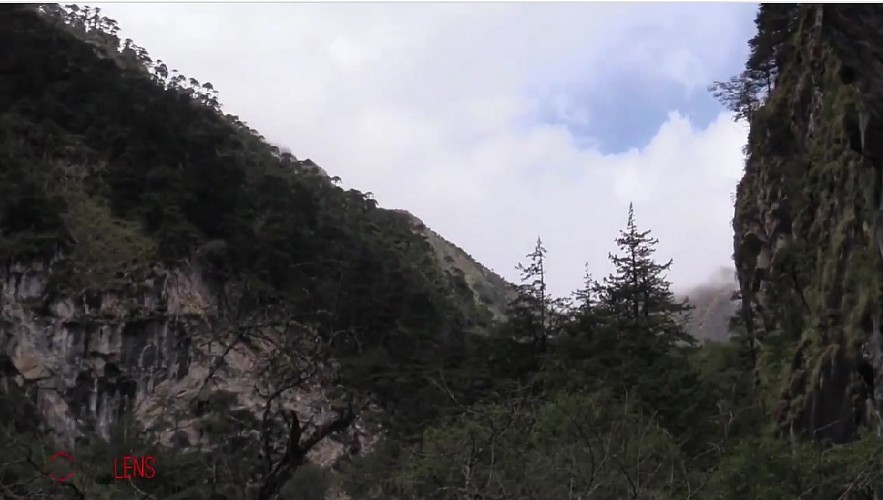 |
The legend of the Chumi Gyatse is now expanding beyond the realms of Damteng and Tsechu, as the number of people who come pray and collect the water from here is growing. Thupten Dorjee who brings people from outside the state and also from abroad to visit the waterfalls, is excited that “the stories of our culture which sits so well with the place and its history is spreading and is a meaningful attraction for people from all communities.”
The Road to Chumi Gyatse
Reaching the “Holy Waterfalls” is somewhat still demanding, akin to any other pilgrimage sites where you have to drive long hours, tread through hills and mountain tracks and at times, use horseback to get to the place. There are two routes from Tawang which meander through some frightening yet thrilling mountain roads with deep gorges and the most amazing landscapes anyone could ever ask for. The longer route through Khirmu and Jangda covering a distance of approximately 130 kms takes five hours whereas the shorter one which is along the Bumla pass route takes about three hours.
Our story-telling mission chose to take the shorter route snaking along the gorgeous Pt Tso lake, and taking a diversion at a point near the Joginder war memorial about two kilometres before reaching Bumla, driving through a mix of black top kuccha muddy roads leading to the Lungro Grazing Ground (LGG) and covering a distance of approximately 88 kms.
The ride covering various altitudes from 15,200 to 15,600 feet provides a unique opportunity to bask in the serenity of quaint hilly surroundings, watch the wild yaks graze in the open grasslands and also engage with people, many of them women, either near a Gompa or along the highways working on roads, Border Roads Organisation (BRO) led construction projects and small roadside villages.
“I couldn’t have understood the place, its people and their livelihood if we hadn’t taken this drive. This makes the trip to the waterfalls so educative,” exclaimed Wanbanjop, our young Shillong based cameraperson as he kept looking out of the moving vehicle to catch a glimpse of everything that caught his gaze.
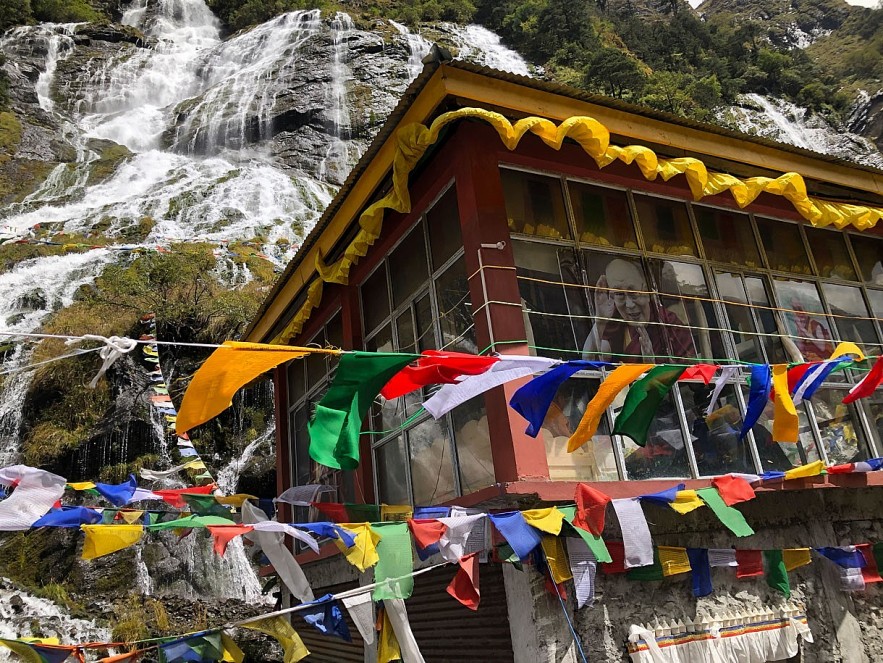 |
| Gompa built in 2019-2020 by Chief Minister Pema Khandu at the foothills of Chumi Gyatse |
After driving up to the Tshechu village and crossing another village called Damteng which is famous for some its hot springs, we had to walk for another 1.5 kms from an army point to experience the serenity and beauty of the waterfalls.
From November the weather changes overnight with blankets of snow covering the road making the travel to the waterfalls next to impossible. The season for visitors, especially tourist, resumes from May onwards with the arrival of spring with floral bounty everywhere and lesser snow on the roads.
The Making of the Shangrila Calling
The main reason is to promote and develop the area. “The place is extremely important for us, culturally and religiously,” says Jambe Dondu one of the chief organisers of the festival. Besides the beauty of the place itself, it also has huge geopolitical significance which incidentally is weaved into how the culture and the Buddhist religion has been preserved here by the Monpas, in contrast to the story on the other side of the border. The residents on the other side of the waterfalls in the Tibet Autonomous region are believed to be under severe pressure of Sinofication preventing them from making the Chumi Gyatse equally popular and a place for regular worship as is the case on Indian side of the border.
From a cultural and religious point of view, the place should provide access to people cutting across borders, particularly the Monpas who reside across the LAC and form part of the socio-cultural milieu on either side of these majestic waterfalls. Locals from the Tsechu village believe that Buddhist community from across the border are adept at climbing hills and mountains on their side to get a glimpse of the cultural practices on the Indian side and also offer their prayers from a distance.
For tour operators “bringing people from Tawang to the Chumi Gyatse has become a regular affair.” It was Thupten Dorjee’s fourth visit to the place in barely a month, this time he was guiding two young female trekkers from Mumbai. “We don’t know what’s happening on the other side and how our Tibetan brothers and sisters are practicing their culture, but we are happy that our side is doing everything right,” he said as he pointed to towards the picture of a smiling Dalai Lama on the glass walls of the Gompa.
The increase in the footfalls of locals has been a “thing of joy” for the inhabitants of the place and also for the organisers of the ‘Shangrila Calling.’ “This is really good as our own people are gradually learning more about this place and it will help us to show how our culture binds us all and is so unique,” says Gambe.
During the festival the Lamas explain the significance of the place, followed by treks across the local villages to familiarize with the local cultures, an evening of local, Indian and other forms of cultural dances and music. The most prominent folk dance of the Monpas, the Aji Lhamo dance and the lion dance are some of the key cultural events that are on display.
By Bidhayak Das
Preserving the Dharma: The Encouraging Tale of Buddhist Nuns in North East India
For centuries, Buddhism has played an important role in the culture and religious beliefs of North East India. However, female involvement in Buddhist practice has been largely limited due to entrenched patriarchal social structures and religious institutions. This has been the case since the time of the Buddha himself, illustrating the complex and rich history of Buddhism in the region.
In Arunachal Pradesh: Discover the Charms of Serene Mechukha That Captures the Soul
Surrounded by snow-capped peaks and various seasonal streams, the high-altitude valley of Mechukha, located in the newly created Shi Yomi district of Arunachal Pradesh, is a sight to behold, and certainly one of the most picturesque destinations in the area. Nature lovers will not be disappointed, for here lies a paradise.

